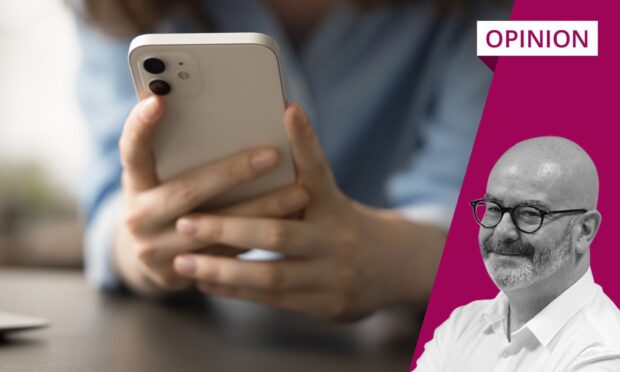Every so often someone rolls out a pilot project that has you thinking why have a test run, just get on and do it?
The perfect case in point is the two high schools in Edinburgh that have banned pupils from using mobile phones during the school day.
The schools don’t confiscate phones – which would have the diddums spitting the dummy about their rights, of which some teenagers know so much while not bothering about the responsibility side of the justice coin.
Instead, they put them in a special wallet with a magnetic seal that can only be opened when the go home bell has rung.
Genius idea that lets youngsters keep their precious mobiles in their possession.
They just can’t spend the day on TikTok when they should be learning stuff, not checking out the latest trend to smear yourself in duck fat and snorkel in the bath.
But there was one line from Edinburgh Council that had me shaking my head in disbelief. The move is apparently necessary to end ‘competition’ between phones and teachers for pupils’ attention.
Say what, now? Is that actually a thing? If so, school has obviously changed a fair whack since I was a grubby pupil at Boroughmuir in Edinburgh.
And a whack was precisely what you got if the teacher thought for a nanosecond you were not giving your complete and undivided attention to the lesson being taught.
Look out the window for a moment to muse “that cloud looks like a Dalek” and a piece of chalk bounced off your bonce. Do it a second time and it was the blackboard duster.
Not that I condone for a second the use of physical force against kids. The only thing that teaches them is that hitting folk is fine to get what you want.
But how have we got to the stage where a youngster even contemplates looking at their phone in a classroom without consequence?
We need to ban phones in schools to make room for learning
More chillingly, have we as a society reached the point where all life, even school life, is only real when viewed through a screen?
Seems so. I’m actually typing these words beside a pool in sunny Gran Canaria and everyone around me is glued to their phone, not savouring the blue skies and swaying palms. What a waste.
Perma-doomscrolling is a learned habit and one that we need to unlearn before all we know of the world is fed to us by algorithms and pixels.
And the place to break that habit, to show life is better seen through your own eyes and gloriously elevated by your own understanding, is in school.
So, let’s not be faffing around with projects in two high schools in Edinburgh. Let’s ban mobiles for every school and every pupil in Scotland so they can grow up savouring the wonders around them and not seeing life in tunnel vision.
Scott Begbie is a journalist and editor, as well as PR and comms manager for Aberdeen Inspired.

Conversation